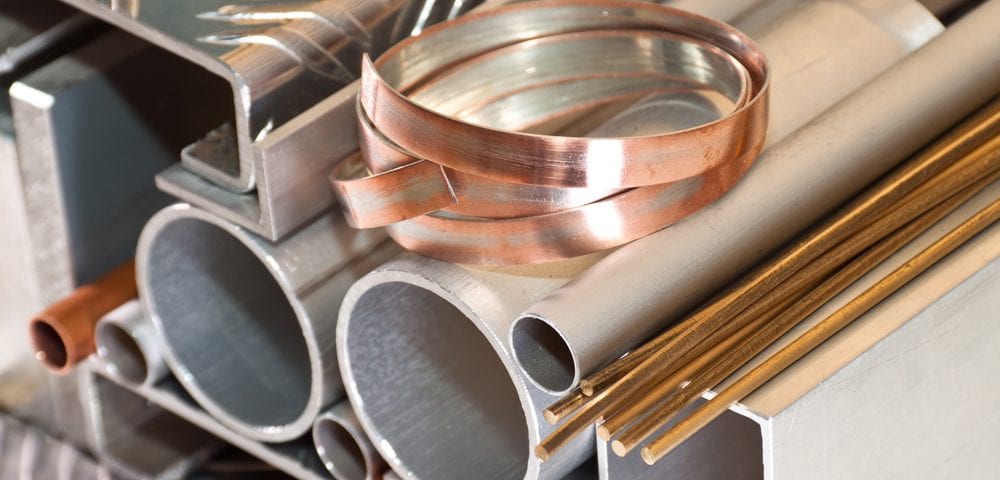Understanding Ferrous Vs. Non-Ferrous Metals

Selecting Proper Fit-to-Size Metal Cutting Method, Part 2
April 12, 2019
Learning About Steel Scaffolding for Construction
April 26, 2019Within the metal world, there are a number of different terms to know that mean a whole host of things. Many of these terms are opposites of each other and refer to important metal properties or processes, and one such term is “ferrous” metal versus “non-ferrous” metal.
At Wasatch Steel, we can help you with all these kinds of definitions and terms when you employ our steel services. Let’s look at the world of ferrous compared to non-ferrous metals, where steel comes in, and some examples of each.
Ferrous Vs. Non-Ferrous Definitions and History
To perhaps oversimplify things a bit here, ferrous metals are those that contain iron while non-ferrous metals are those that don’t The true definition is a bit more specific and speaks to distinct chemical properties of individual metal types to figure out which applications they’re best for, but this is a simple way of thinking about it for general purposes.
Humans first discovered and began using non-ferrous metals in ancient times, and this discovery actually marked a major historical transition. Most historians mark the period where copper was discovered – around 5,000 BC – as the final days of the Stone Age and the early beginnings of the Copper Age, which would later be followed by the Bronze Age when bronze alloy was discovered. Ferrous metals, on the other hand, were discovered in about 1,200 BC through iron production – and again, this marked the start of the Iron Age.
Examples of Ferrous Metals
Here are some of the common examples of ferrous metals, plus how they’re made:
- Steel: When carbon and iron are added together, the iron hardens and steel is produced (heat is also involved in this process). Steel is most common in construction, manufacturing and other industries where durability and toughness are required. Alloy and carbon steel are additional steel alloys that have different properties, and may have some other uses as well.
- Iron: The most common format here is cast iron, which is an alloy that comes from iron, carbon and silicon combined. Cast iron resists wear very well, and is also extremely hard and brittle, making it ideal for use in engines, stoves, machine tools and various water piping formats. Another type is wrought iron, which has very little carbon content and is mostly used for fencing, railings, barbed wire, chains and similar needs.
Examples of Non-Ferrous Metals
- Aluminum: A low-weight, soft item that can be worked with easily and is used across many industries.
- Lead: Lead is valuable because it resists corrosion, and is often used in power and electrical areas.
- Copper: The first non-ferrous metal discovered, copper is also used in the electrical industry for wire and similar conductors.
- Zinc: Best for galvanizing, a process where zinc is used to coat iron or steel to prevent corrosion and rust.
- Tin: A low-strength metal that, like zinc, is often used to prevent corrosion.
For more on ferrous versus non-ferrous metals, or to learn about any of our steel services or buy our steel online, speak to the pros at Wasatch Steel today.



